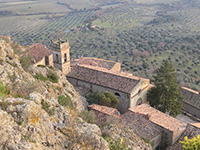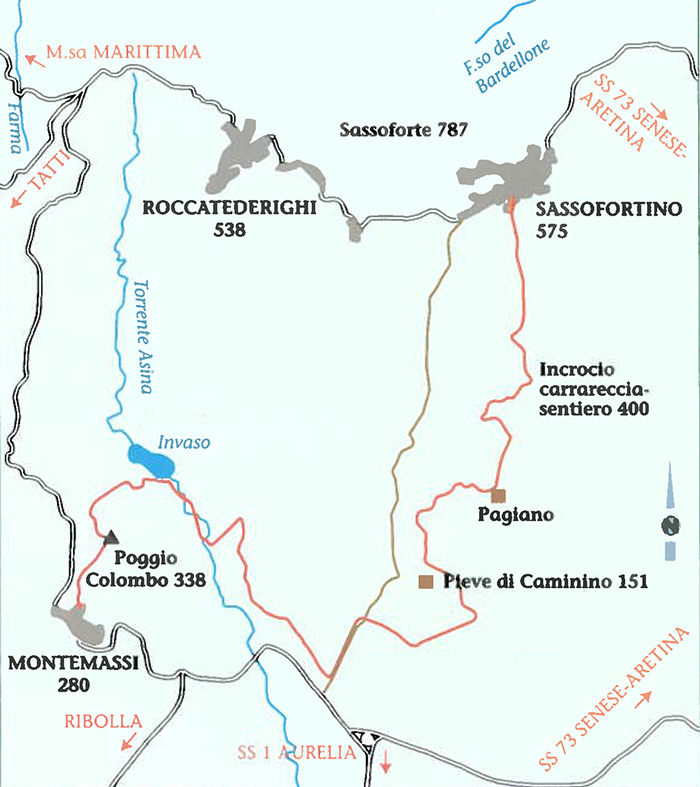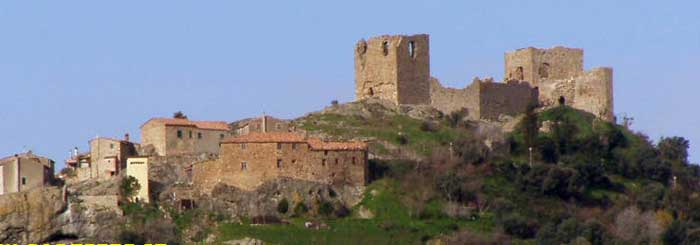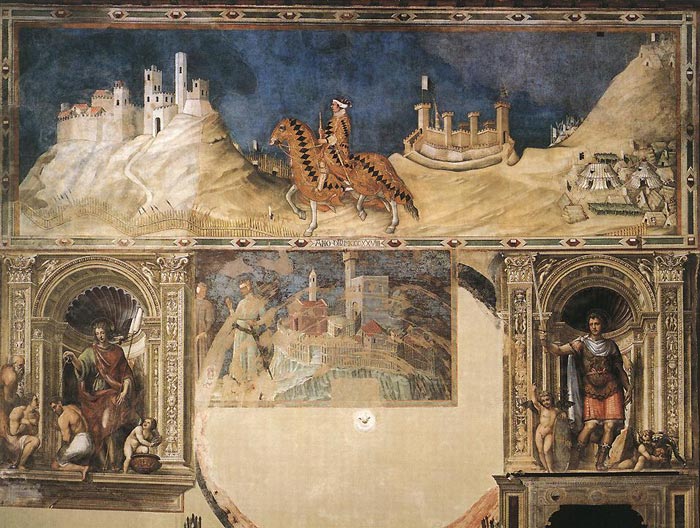Development: 15,8 Km | Time: 5,00 hours
Interests | Historical Architectural (Pieve di Caminino) | Geological (Calcareous Fossils) | Botanical (Lavender and Cistus near
Montemassi) | Landscape (Pagiano-Road on the way to the Asina's dyke-Poggio Colombo)
Practicability
Medium difficulty.It runs through paths and cartways, fields and woods. We suggest covering this route
when it is cool. Possibility of fetching water along the trail.
We leave Sassofortino walking through small crops, Macchia , vineyards and pastures, an area rich in calcareous fossils where it is easy to find imprints of bivalves and gasteropoda where the fields are ploughed. In the whole area, especially on the highest part of the hill, huge oaks stand out on the fields. They were once very common, kept for their acorns and also for the precious shade they gave to the ploughmen when they rested. These oaks are nowadays cut down to give space to the work of tractors. We keep on walking through crops and woods of cork trees, to find ourselves in the "Pagiano" area where chestnut trees easily grow thanks to the presence of a plate of rhyolite, we then find holm trees and we get to the "Pieve of Caminino".
y the asphalted road there is the Oratory of Saint Feriolo, where it is said the Saint was martyred. Pilgrimage to this place only ended a few decades ago: people came in spring to pray that they would have plenty of water for they crops. Pilgrims would put an herring on the Saint painting, near his mouth so that it might recall him the idea of the refreshing water. We carry on crossing the asphalted road that leads to Sassofortino; we go through an under wood of cistus and lavender together with arbutus heather and huge cork trees. Going down to the dyke of the torrent Asina, we find the itinerary that comes from Roccatederighi, through "Poggio Colombo" we arrive in Montemassi.[1]
|
Simone Martini's famous fresco of Condottiere Guidoriccio da Fogliano panoramared across the whole of the end of the Sala di Mappomondo - the main hall of the Palazzo Pubblico. The otherwise historically obscure Sienese warlord immortalized by Martini is seen pictured in 1328 on his way to make a forceful point to the governor of the castle of Montemassi after putting down some local revolts around there.
The fresco of Guidoriccio da Fogliano, depicting the conquest of the castles of Montemassi and Sassoforte in 1328, formed part of a fresco cycle "Castelli" which occupied the upper part of the wall opposite to the Maestà in the Sala del Mappamondo.
|
Simone Martini, Equestrian portrait of Guidoriccio da Fogliano, 1328-30, Palazzo Pubblico, Siena
|








